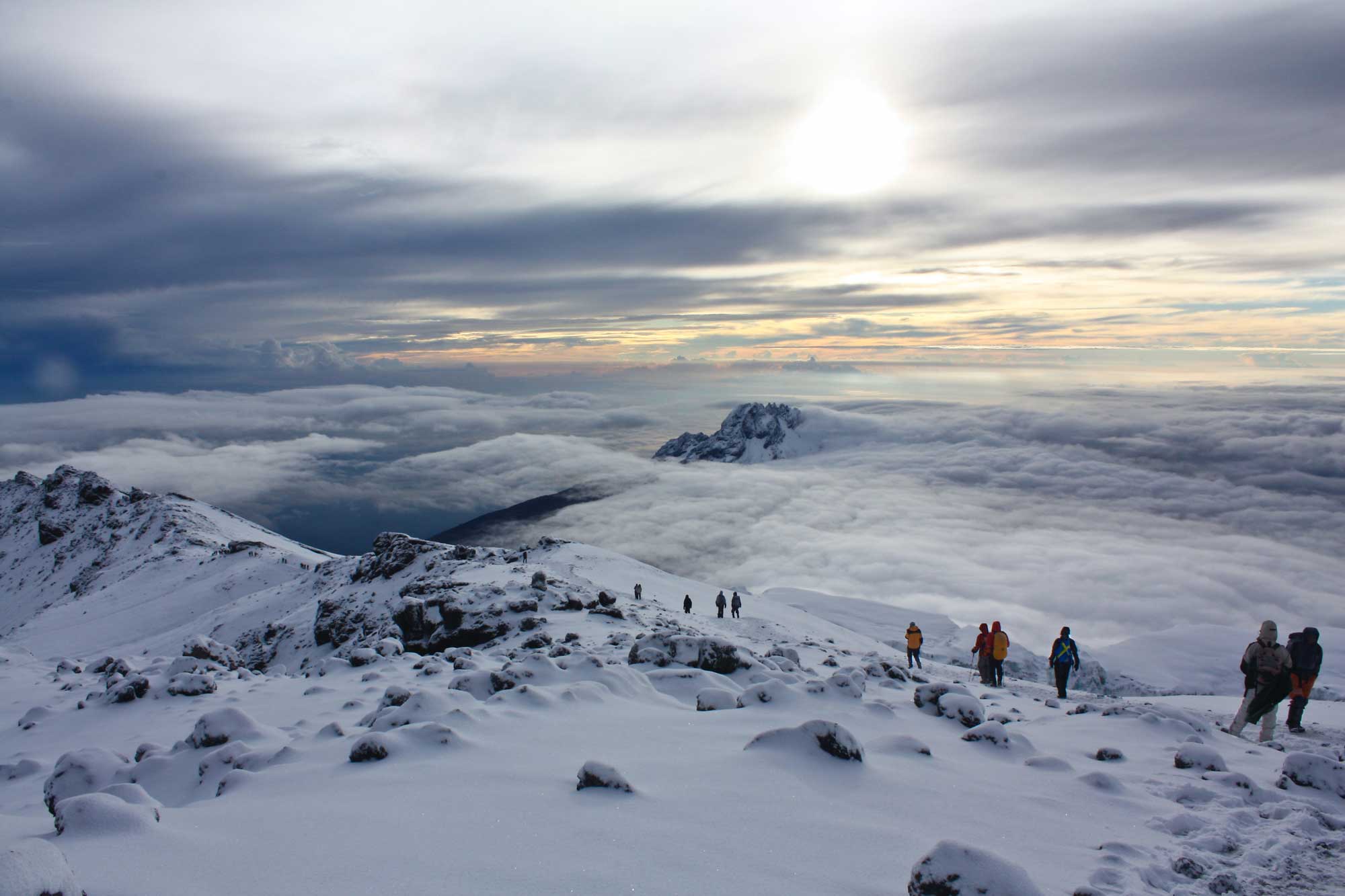- 1300 761 980

Africa’s tallest mountain at 5,895m above sea level, many are keen to conquer Kilimanjaro. Being the fourth highest of the seven summits, its no surprise that many make it to the top and unfortunately many don’t. Read on for some top tips that will help you prepare and succeed in the ultimate adrenalin rush and an adventure of a lifetime, climbing Kilimanjaro.
While you may want to finish the trek faster, we honestly can’t recommend a longer trek enough. The more days you take, the more time you have to acclimatise and thus the lower your risk of altitude sickness. Statistics also show a significantly higher success rate for 8 day treks compared to 5-7 day treks.
That being said, if you’re staying in huts and not camping, the chances of success are greatly increased and popular routes like the Marangu Route have success rates between 80 and 90%.
When you’re at such a high altitude, dehydration occurs much faster. The altitude and dehydration can lead to headaches, fatigue and acute mountain sickness. To avoid ending up in a situation where your climb is more of a struggle or even unbearable, drink lots and lots of water.
Be sure to bring electrolyte packets for your water, not only to make it taste better but also to replenish all the lost electrolytes during the climb.
Packing for a holiday is difficult. Packing for a mountain climb is even more of a challenge.
Most important is clothing. In short, layers are key, and cotton is big no. The climate of the mountain can vary and because of this, you’ll need to pack accordingly. There’s a range of packing guides and the African Travel Specialists are here to help and answer any questions you have. But here are a few tips to keep in mind when packing:
Without a doubt, the only way to ensure your success is to practice and prepare yourself for the climb. Preparation really is paramount, there’s no way you’d run a marathon without building up to it, and the same goes for a mountain climb.
Compared to other climbs like Everest, Mt Kilimanjaro doesn’t require any technical mountaineering skills and it is fairly suitable for beginners. Despite this, you still need to prepare, the altitude especially will be a shock and if you haven’t experienced something even remotely close to it, you’ll be in for a wild ride. In essence you’ve got to prepare your lungs for low oxygen levels or you’ll really struggle.
Our final tip is to stay positive and optimistic. The only way to get to the summit is to believe you actually can. Take the climb one step at a time, enjoy the journey and while the summit is the end goal, don’t forget to appreciate where you are and the spectacular scenery along the way. There might be times where you feel awful and don’t think you can go on, but it gets better, lots of rest and water will get you through. Every step you take is one step closer to the summit and its not a race to the top, it’s a journey.
Suite 2, 1st Floor
261-271 Wattletree Rd
Malvern VIC 3144



For tailor-made itineraries or enquiries…